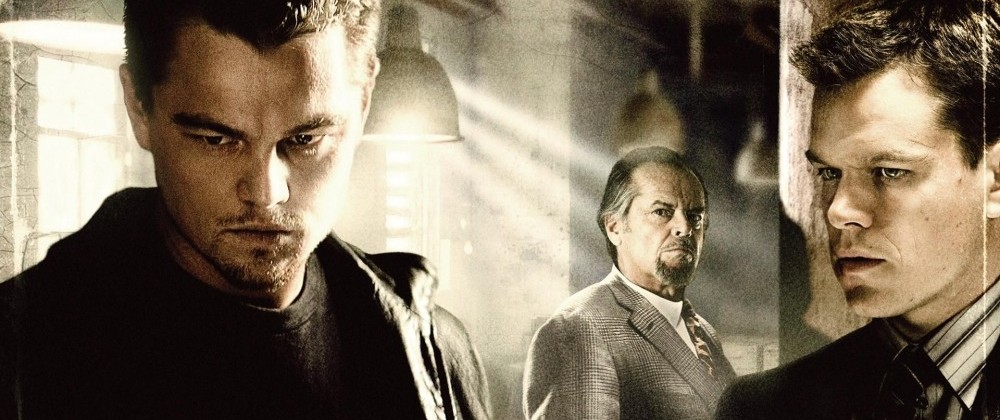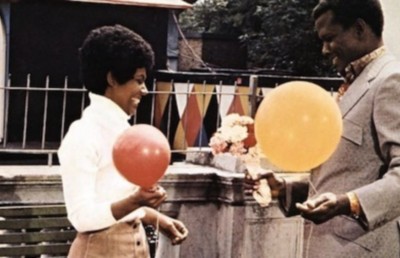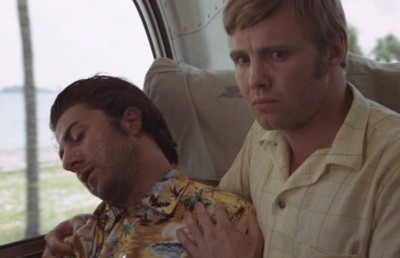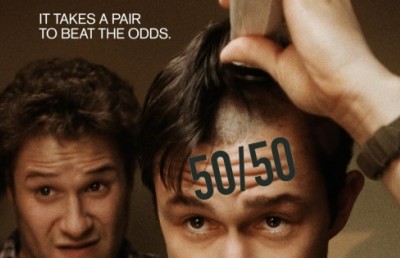The Role of Star Persona in Character Development in The Departed

The Departed (Martin Scorsese, 2006) stars three well-known and celebrated actors of our time: Leonardo DiCaprio, Matt Damon and Jack Nicholson. The film revolves around Boston’s Irish mafia and the state troopers, with DiCaprio as a state trooper working undercover in a mob led by Nicholson, and Damon as a loyal protégé of Nicholson working in the police force as a mole. The casting choice of these three main actors contrasts their star personas with the demands of the characters, adding a new layer to the characters’ psychological complexity, as well as enhancing the suspenseful mood of the film. This phenomenon will be explored by looking at each of the three actors separately and in comparison to each other, and examining how their established star personas interact with their performances within the film. This analysis will mostly utilize Richard Dyer’s and Barry King’s frameworks for analysing stars as social types or as characters of their own, and draw from Philip Drake’s ideas about how viewer expectations interact with film elements (Drake 88, Dyer 53-9, King 172-9).
The three main performances can be viewed vis-à-vis Barry King’s distinctions between impersonation and personification. The strong, established star personas of the actors make it impossible for them to achieve impersonation in their performances, as they have come to embody a certain type or ‘character’ through their body of work and physical appearance (King 178-9, Wojcik 171). Furthermore, Richard Dyer explains that stars reflect certain social types or ideologies which become fastened into the mindset of the audience in relation to the star (Dyer 53-9). In this film, these types help develop the characters through a slightly modified process of personification. Instead of relying on these types to help build a character, the personification process works by contradicting viewer expectations about the stars and their type to bring more complexity to the characters. Viewers bring to the film established expectations about the stars, their roles and performance styles, which create the basis for this functioning of the star personas to complicate the characters (Drake 85, 88).
Nicholson’s character is a straight-talking, sadistic, aging gangster, fiercely loyal to his Irish heritage. He has a calm, almost friendly demeanour, but underneath that is a ruthless and violent person. This unpredictable nature is largely created by Nicholson’s unusually subdued performance in comparison to his usual energetic performance style. The typical broad, crazy grin and Nicholson’s grand, excessive gestures and facial expressions are distinctly absent. This causes the viewer to wait uneasily for Nicholson to explode with the aggression expected of him, which in turn feeds into character development. A good example of this is when he is in his bar explaining to DiCaprio that he fears he has a rat among his crew. Nicholson speaks with a calm, low tone of voice, at points barely audible. He stays very still and stares off into space, or alternatively, stares at the table or DiCaprio intently and unmoving, as if looking for answers or minute signs of betrayal. His performance is very low-key, but the viewer waits for the psychotic rage we expect of Nicholson to break through. This expectation makes the character more menacing and unstable in this unnatural calm which we do not associate with Nicholson. Hints of an underlying aggression are visible, such as when Nicholson bares his teeth in an imitation of a rat, raising his eyebrows and looking up from behind his eyelashes, momentarily reminding us of his previous, more sociopathic roles. Also, when he touches his forehead or plays with his ring, his fingers tremble slightly, as if he has to fumble for control over them and his own emotions. These small twitches of movement hint at a barely controlled rage that seems to be boiling to the surface, and together with the uneasy, unusual calm and what viewers expect of Nicholson, make the character seem volatile, twisted and ready to erupt in violent rage.
Another trait that is enhanced through the interaction of Nicholson’s performance with his established star persona is the age of the gangster. Nicholson’s subdued performance, while hinting at a more aggressive maniac behind the calmer exterior, also shows a more vulnerable side to the character. His low-toned speech seems to hint at exhaustion. For the most part he looks at DiCaprio with heavy-lidded eyes, as if worn out by the years of crime. His small hand gestures and still body form a sharp contrast to the grandeur Nicholson performance we are used to seeing, projecting a fatigue around the character. While the character may be old, because the viewer is familiar with Nicholson’s star type, we come to expect that the character, as Nicholson, is capable of absolutely uncontainable rage and aggression. We expect Nicholson to burst out with large expressions, perhaps jump up in his seat or begin shouting. Instead, he remains seated, his entire body barely moving throughout the scene, speaking slowly and calmly. His gestures do not thrash through the space around him, but are focused and controlled. This change in the actor lends an age to the character that would not be possible with a different actor, as the loss of the psychotic Nicholson becomes a reflection of the loss of this crime boss’ energy and vitality. Therefore, Nicholson’s more controlled performance gives the character the heaviness of a long career in a draining environment, while also making him more unbalanced and threatening. The social type Nicholson has come to embody through his part performances, the uncontrollable sociopathic figure, is also expected of this character. When these expectations are not met, the character gains a more developed personality (Dyer 71, Drake 88).
Like Nicholson, DiCaprio’s performance in The Departed contrasts with his previous body of work, but works in a slightly different way in its interaction with the film. Prior to The Departed, DiCaprio’s body of work mostly included innocent, ultimately ‘good guy’ roles in movies such as Titanic (James Cameron, 1997) and Catch Me If You Can (Steven Spielberg, 2002). DiCaprio had proven himself capable of playing very complex characters, but his performances were usually quite guarded, controlled and inward-looking. In The Departed, DiCaprio’s character endures considerable stress in leading the double-life of a policeman working undercover, and is haunted by the crimes he witnesses and the stress he feels in fear of being discovered by the merciless mob leader. While the character projects an image of a tough and violent gang member, inside he is a vulnerable, kind person who wants to do the right and honourable thing by helping his community.
This disparity between the exterior and the interior is developed by the narrative and through DiCaprio’s performance. Specifically, his performance has an edgy quality that his previous performances and roles have not had (Dyer 71). His movements are more jerky, slightly wider and larger than what the viewer is used to seeing from DiCaprio. He moves and shifts his body relentlessly, as if he is always uncomfortable or nervous. For example, when he is speaking with Nicholson in the bar, he shifts between leaning in towards Nicholson and leaning back into his chair. He is constantly jerking his head up and down, nodding slightly in a nervous fashion. He keeps glancing around, as if waiting for someone to jump out and kill him. His facial expressions in particular reflect how wound-up the character feels. He frequently squints intensely, scrunching up his face as if he was suffering in some way or as if the character was intensely concentrating on keeping up his gang member ‘act’. This makes him seem older by emphasizing the lines between his eyebrows, making him resemble even less the carefree, young DiCaprio we know. As he listens to Nicholson, his expression is one of anxious waiting. When he speaks, he frowns or raises his eyebrows high to crease his forehead to an extreme degree. His speech mirrors his expressions by being choppy, with a lot of nervous pauses punctuated by his body’s jittery movements. This tense performance style lends an air of nervousness to the character, allowing us to share in his stress.
This non-normative DiCaprio performance reflects not only the character’s stress but also shows how the character must change to work undercover. This is visible in his hard facial expressions, as well as his violent outbursts. For example, in one of the bar scenes at the beginning of his undercover mission, DiCaprio beats up a man who makes fun of him for ordering cranberry juice. His reaction is brutally violent and energetic for the character, and because it is in such sharp contrast to the typical, calmer and more subdued anger of the DiCaprio type, the act also seems insincere and put on for show. This reinforces the depth of the deception the character must undertake in his job. Because the act is so atypically coarse for DiCaprio, the viewer can more easily see how atypical this is for the character as well. Again, viewer expectations that the DiCaprio persona be calmer and more controlled are crucial in developing this duality in the character (Drake 88).
In contrast, when DiCaprio’s performance is softer, and more typical for his star type, the viewer feels like they are seeing the true nature of the character, not the act he must put on for his work. For example, when Billy Costigan is visiting Madolyn at her home, his actions resemble more the performance we are accustomed to seeing from DiCaprio. His movements are more fluid, his speech is less forced, rushed and has a softer quality. He is no longer frowning and creasing his face intensely. Instead, his face is now relaxed in a neutral state that projects openness. Therefore, DiCaprio’s edgier performance in contrast to his earlier roles enhances the stress the character feels in working undercover and makes the undercover situation more convincing for the viewer. However, in the moments when this harsher facade drops, the film allows us to see the character in a different light, and it is DiCaprio using his more usual performance style that makes this character development possible.
In addition to his characteristically soft, inward performance style, prior to The Departed, DiCaprio was known as a typical teen superstar, and his physical traits were very much a part of this star persona (Wojcik 171, 181). In viewers’ minds, he was a young boy, with soft, smooth, clean-shaven skin, a boyish floppy haircut and the naive, almost feminine glow associated with teenage boys. This film sees DiCaprio wholly transformed; his hair is cut into a short, jagged crew cut, and he has a prickly, messy goatee that continues on as a sort of half-beard, making his face messier and rougher. The lines on his face and the bags under his eyes are more evident, emphasized by his spending a large portion of the film bruised up or squinting and further deepening these lines. Overall, his entire ‘pretty boy’ image has disappeared, and in place stands a man roughed up by life. The dark shadows and toning of the film enhance these traits, putting DiCaprio in shots that accentuate the lines on his face and the sharp edges of his cheekbones and jaw line (Wojcik 176, King 174). This physical transformation translates a different person to the screen than we are used to associating with DiCaprio. He goes from being frail and soft to rough and brutal, another integral part of the character developing into the gangster role (King 172-3).
While Nicholson’s and DiCaprio’s performances work against their star personas to deepen the characters, Damon’s performance is actually more in line with his established persona, working to enhance the character’s schizophrenic personality. Damon’s earlier roles put him in the same vein as DiCaprio; while his characters were psychologically complex and even disturbed, he was, for the most part, a good guy (Good Will Hunting, Gus Van Sant, 1997); All The Pretty Horses (Billy Bob Thornton, 2000) or just a misunderstood bad guy (The Talented Mr. Ripley (Anthony Minghella, 1999). The character he portrays in The Departed is a great departure from this (no pun intended). His character is seen by many characters as an efficient, law-biding police officer who may at times be a bit harsh, but just wants to serve his community. In reality, the viewer understands that the character is in fact a morally dubious person with no regard for lawfulness. He has a hard exterior, but unlike DiCaprio, the inside is just as hard and tough. The character is bad to the very core, as we see him lie, kill, and deceive.
However, it is easy to forget this, as Damon’s performance plays up the virtuous Damon persona to enhance the character’s image. For example, Damon often flashes his unique lopsided grin and allows his natural Boston accent to come forth, reminding viewers of his star persona and the social type built around the idea of a grounded, kind, normal guy from Boston (Dyer 53-9, Wojcik 177). This persona reflects onto the character. For example, in the restaurant scene with Farmiga, his composure is characteristic of his demeanour throughout the film. He seems comfortable and in charge of the situation, with a strong, straight posture and little unnecessary movements. His movements are casual; a slight flip of the hand to accompany his words or opening his arms as if embracing the situation. He portrays an air of light-heartedness and honesty, with slight smiles, chuckling, and a confident tone of voice. This ‘good guy’ image is visible in his performance throughout the film, and as a result, he seems the most balanced, honourable and in control of the three main characters.
Because of this amplification of the Damon persona, once his character’s hard core becomes visible, the viewer is shocked despite having known about it from the beginning. The contrast to the Damon persona that has been flaunted throughout the film jolts the audience, making them realize that like the characters in the film, some viewers may have also fallen for this act. An example of this kind of moment comes in the film theatre as Damon speaks with Nicholson. Here he uses a commanding, aggressive, almost manipulating tone of voice. His laugh and smiles are shorter, rougher and condescending, a far cry from the casual, light-hearted laugh from other scenes. This more imposing and aggressive performance style shocks the audience and takes us out of the Damon persona, making the character more developed and dynamic. Thus in Damon’s case, his performance works with his star type to aid his role of the good citizen and police officer, and allows even the audience to be deceived by the character (Wojcik 182). The character’s ability to work undercover is thus enhanced by this casting decision.
These casting choices are not only significant in terms of the individual characters the actors were chosen to portray, but also in the combination of actors that were chosen. The film opens with Nicholson’s instantly recognizable, deep, rough, throaty voice in voiceover. This mechanism uses Nicholson’s star persona to immediately add authority and wisdom to the character, positioning him as a god-like, guiding voice within the film. In addition, pairing Nicholson with the two younger actors plays on Nicholson’s established reputation as a seasoned actor to enhance the character’s position. The character’s experience and wisdom is projected through this casting decision, allowing the viewer to instantly realize character relationships through extratextual information (Drake 85, 88).
Damon’s and DiCaprio’s physical similarities also develop the mood of the film. Both have blonde short hair, are of medium build, and have an all-American, slightly rugged look, while still remaining urban and put-together. This similarity is especially apparent in the scene at the end of film where both are standing in the elevator, just before DiCaprio’s character is shot. This is the first time the two are onscreen together, and here it is evident that not only are their natural physical qualities the same, the film emphasizes these qualities (King 175). Both sport the same haircut, styled in the exact same way, and are wearing similar clothing; blue jeans and a t-shirt with a dark jacket left open. Throughout the film, these physical qualities can make it more challenging for the viewer to tell the characters apart, further blurring the lines between good and bad. It becomes difficult to instinctively realize who is on what side, mimicking the confusion the characters feel in questioning morality and other characters’ true nature. This last scene really takes advantage of this, as throughout the film the audience has been conditioned to associate Damon with the police and DiCaprio with the mob in their actions. Suddenly, the roles are reversed, with DiCaprio handcuffing Damon and taking on his role as an officer, and Damon now the gang member. This shift leaves the viewer with a slight feeling of whiplash as the narrative forces our associations of roles to reverse, and the filmic images of the stars do not aid the shift (King 176-7).
The Departed demonstrates how important casting decisions can be, and how these casting decisions can affect the narrative and its characters. The three actors within the film embody very distinct personas, each in their own unique type (Dyer 53-9, Wojcik 173, 175-6). This makes audiences think they know what to expect from the characters and performances. However, the performances lay out a new kind of Damon, DiCaprio and Nicholson for the viewers, using their own star “characters” to create more dynamic characters (King 179). For Damon and DiCaprio, their star personas develop distinct personalities within one character; the good and the bad sides. The confusion viewers feel in this contradiction between the established star persona and the performances also helps create the mood of subversion and suspense around the film. The viewer must constantly be alert and wary of characters’ true intentions, much like the characters themselves. The Departed shows us that star personas do not just work as box office magnets, but can influence how the film functions in terms of its core themes.
Works Cited
Barry King. “Articulating Stardom.” Stardom: Industry of Desire. Ed. Christine Gledhill. London and New York: Routledge, 1991. 167-182. Print.
The Departed. Dir. Martin Scorsese. Perf. Leonardo DiCaprio, Matt Damon, Jack Nicholson. Warner Bros., 2006. DVD.
Pamela Robertson Wojcik. “Typecasting.” Movie Acting: The Film Reader. Ed. Pamela Robertson Wojcik. New York: Routledge, 2004. 169-189. Print.
Philip Drake. “Reconceptualizing Screen Performance.” Journal of Film and Video 58.1/2 (Spring 2006): 84-94. Print.
Richard Dyer. Stars. (1979) London: BFI, 2009. Print.













